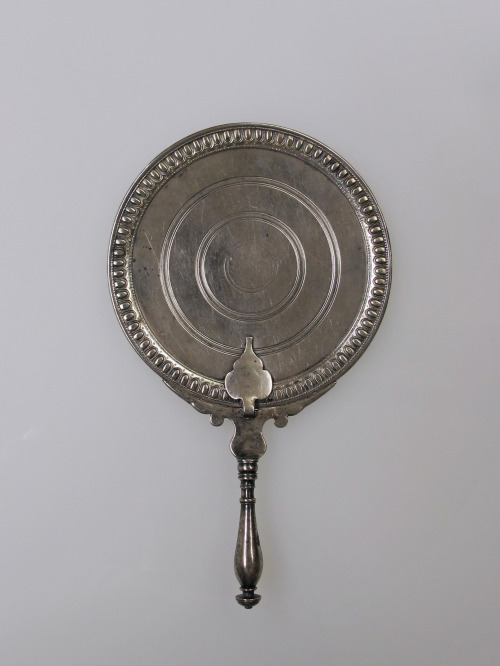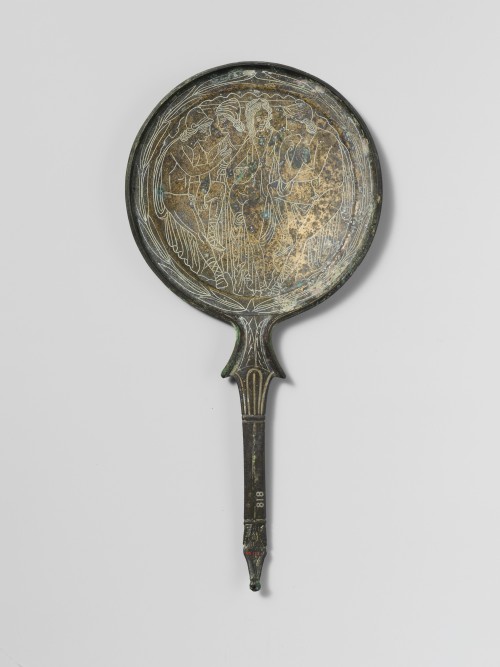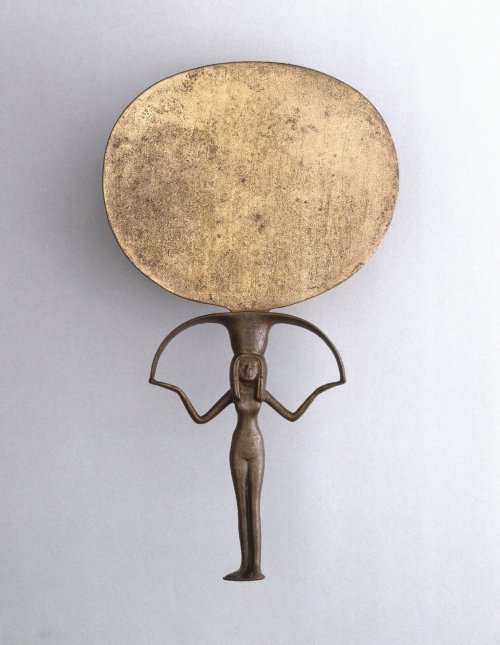Mirrors of the ancient world. These mirrors would have once been highly polished in order to p
Mirrors of the ancient world. These mirrors would have once been highly polished in order to provide a good reflection. The 1st shown is Classical Greek (ca. 460 BC): Caryatid Mirror with Aphrodite. The central female figure serves as the ‘caryatid’ (human support) for the mirror. This graceful figure’s simple drapery is characteristic of the Early Classical style’s “quite elegance.” Also present are winged Eros figures (representing the god of love), which suggests that this female is perhaps Aphrodite, or a bride. Courtesy of the Walters Art Museum, via their online collections: 54.769. Shown next is a silver Roman mirror, dating to the Early Imperial period (1st century AD). The name of the owner, Iris, is inscribed on the back. Courtesy of the Metropolitan Museum of Art, via their online collections: 07.286.127. The 3rd mirror is Etruscan, made of bronze, and dates to ca. 250-200 BC. Depicted here is likely the Dioskouroi with either Aphrodite or Helen and Minerva. It is certainly worth zooming into the photograph to observe the detail of the mirror (which you can do so easier here). Courtesy of the Metropolitan Museum of Art, via their online collections: X.21.86. The final mirror selected is Egyptian, made of silver and copper alloy, and is the oldest mirror shown, dating to ca. 1478-1390 BC. The hairstyle of the female was popular during the middle 18th Dynasty. Courtesy of the Brooklyn Museum, via their online collections: 37.635E. -- source link
Tumblr Blog : ancientart.tumblr.com
#etruscan#egyptian#history#archaeology#art history#ancient history



